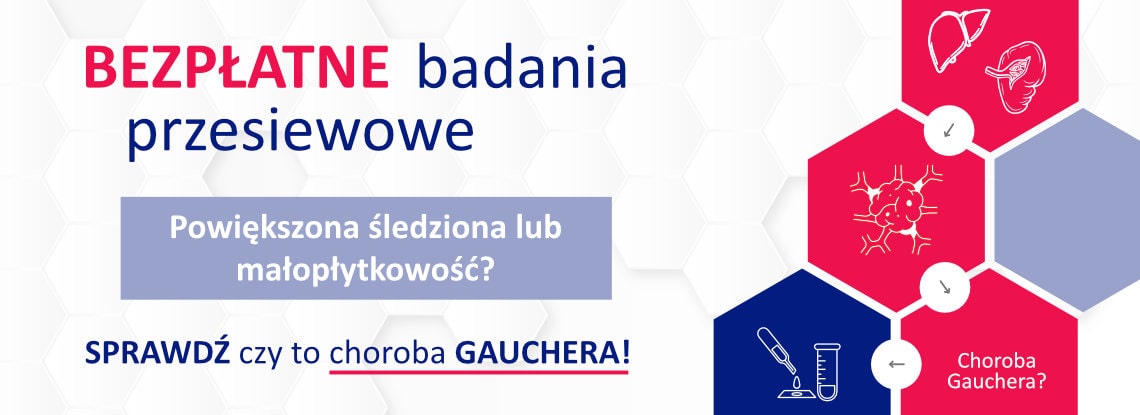Gaucher disease is a rare metabolic disease with a genetic basis that occurs in both sexes. Its cause is the impaired function of one of the naturally produced enzymes in the human body - glucocerebrosidase. Glucocerebrosidase accumulates in the bone marrow, liver, spleen leading to hepatosplenomegaly and bone deformities, among other things.
Gaucher disease symptoms
Gaucher's disease can occupy numerous organs of the human body, and symptoms can vary widely from patient to patient. Some patients with the mild form may not experience symptoms until old age. In others, symptoms can be life-threatening as early as childhood. The most common sites for the accumulation of abnormal Gaucher cells are the liver, spleen and bone marrow.
Typical symptoms in Gaucher disease
- Małopłytkowość / PLT <100×109/l
- Chronic anemia of unclear cause
- Enlargement of the spleen or liver on imaging studies
Other symptoms:
- Bone and joint pain
- Feeling of fatigue
- Prone to bleeding or bruising
- Lowered immunity, recurrent infections
- Bone fracture tendency
Gaucher disease can also have adverse effects on the lungs and brain.



